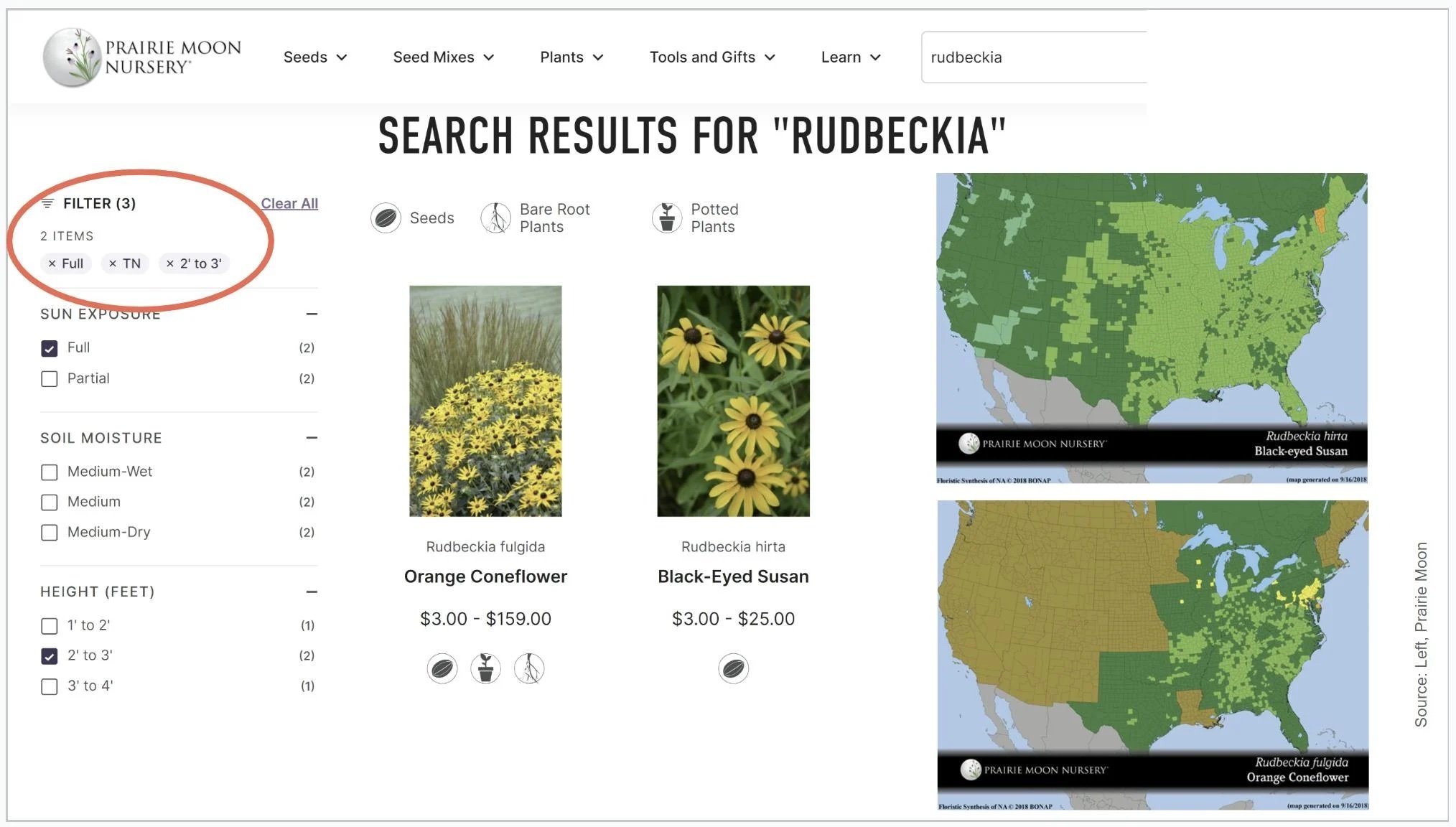Gardening Through Grief
Plus, super sun-loving native plants to celebrate life
In memory of my beloved daughter, Eva Evans.
Dear Yardener,
I had already ordered hundreds of plugs before the devastating call, but they haven’t arrived yet.
Fortunately, Zoe’s spring plug orders had arrived and she had to get them into the ground, which gave her and Sofi something they had to do. Seeing the phlox and foamflower in Zoe’s front yard woodland garden get fuller and brighter each day brought me joy, too, despite everything, as did hiking the paths she’s created in her woods. I’m so proud and impressed by how she has transformed her property, so beautifully, so quickly. She is the real gardener among the two of us.
Zoe managed to organize a final class for our Transform Your Yard students. I had spent that day planning the garden at Lila’s house, where I was staying. Lila wanted cheery yellow flowers, so I ordered 150 Rudbeckia plugs — 100 black-eyed Susans for outside the back windows and 50 cutleaf coneflowers for the shady area outside her office. By the time class started, I was in bed in my pajamas. I planned to watch the recording, but I could hear Zoe clearly from the other end of the house after Lila joined as a student. I crept into the living room to listen behind the door. Eventually Lila moved to the couch and reassured me her video was off. I joined her there to see the images of our students’ yards.
Teaching Transform Your Yard over the past three months has been deeply rewarding, thanks to the dedication, hard work, and creativity of our students. Each has developed a creative, thoughtful master plans for their yard. In the last class, several of them shared how they have pushed through the analysis paralysis of looking at all the possible native native plants and actually bought some and installed them in their yards. They have exceeded Zoe and my dream of helping people across the country transform their yards from lawn to havens where people and wildlife will thrive.
I am embarrassed that I had not felt able to join the class — haven’t really felt like talking to anyone outside our family since hundreds filled Grace Church to give thanksgiving for Eva’s life and to hug us and tell us how much they loved her. I am having trouble just getting out of bed, now that the shock and adrenaline of suddenly, unexpectedly losing my daughter Eva has worn off.
Thankfully, the plugs I ordered before her death will arrive soon and they will force me to get outside and dig in the dirt. If you haven’t ordered native plants to put in the earth this spring, please order some of the plants below and join me in the celebration of life that is gardening.
— The Avant Gardener
P.S. If you would like to know more about my brilliant, hilarious, and beautiful daughter Eva, you can read about her life and death in The Cut.
Super sun-loving native plants
Groundcovers for sun
Groundcovers are important plants in a multi-level ecosystem. I’m talking about plants under one foot tall that tend to spread. And they are also great garden plants because they look great in small spaces.
You’ll see I’ve added species names below the genera this week. In many cases, however, there are similar species within each genera that might be more appropriate for your yard, either because of its range or the conditions it likes. For example, there are three eastern species of Anemone — A. canadense, pictured, likes dry to medium dry soil, blooms in spring, and is native to northern states. A. virginiana likes similar soil conditions but grows to three feet tall, thrives in all sun conditions, blooms in summer, and is native from Maine to Georgia and westward. And A. quinquifolia, another groundcover — growing only eight inches tall — likes moist soil and shade. You should pay close attention to all these characteristics to decide what’s best for a certain place in your yard. Remember: Right plant, right place.
In addition to the groundcovers below, please also keep in mind for sunny areas the sun-to-shade groundcovers I shared in my last column: Carex pensylvanica, C. albicans, Fragaria virginiana, Viola sororia, Geranium maculatum. These are plants you can repeat in both sun and shade to unify your yard.
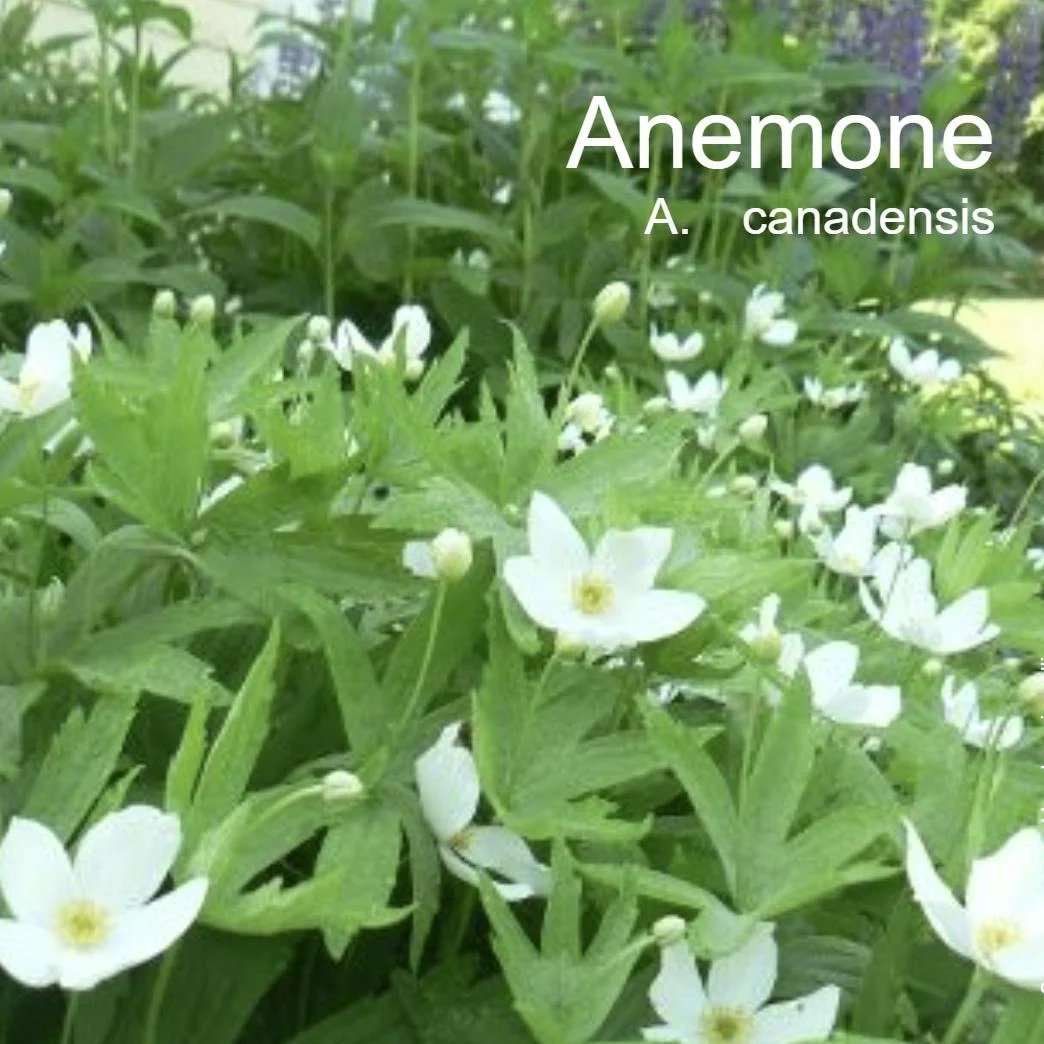
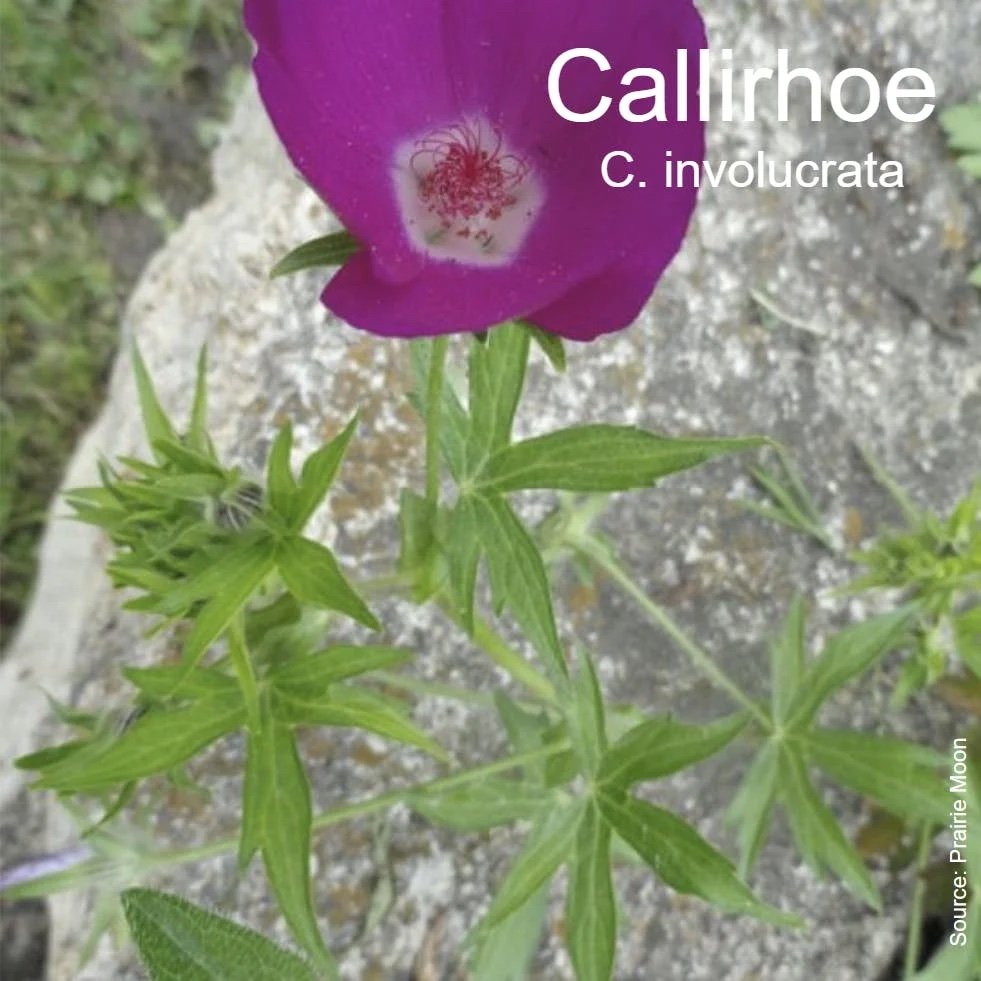
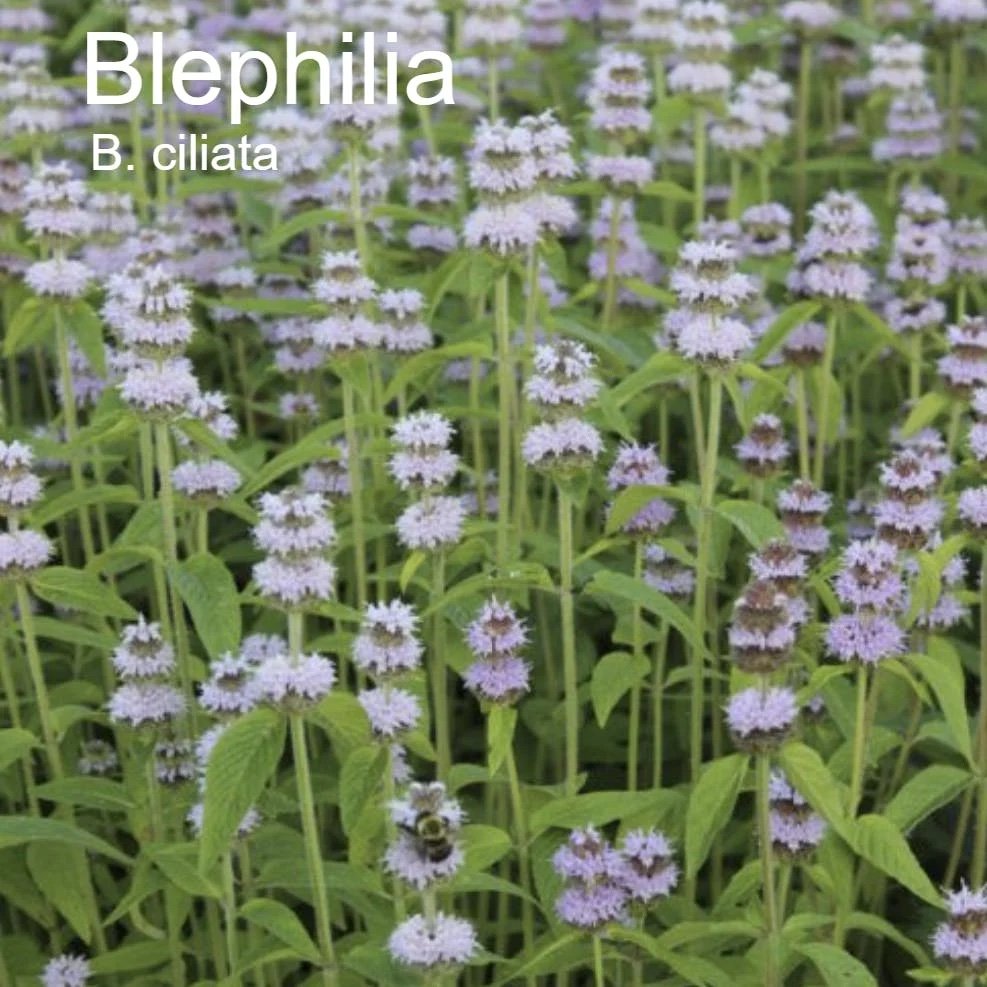
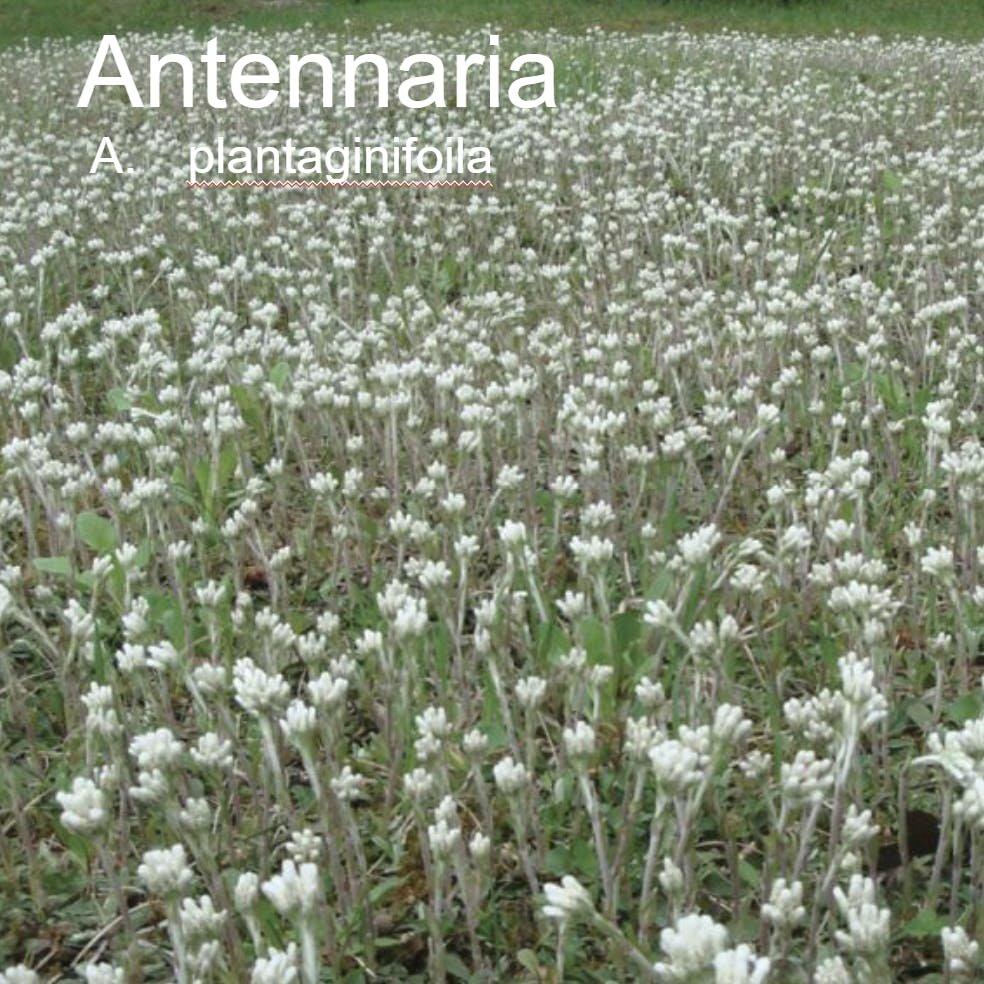
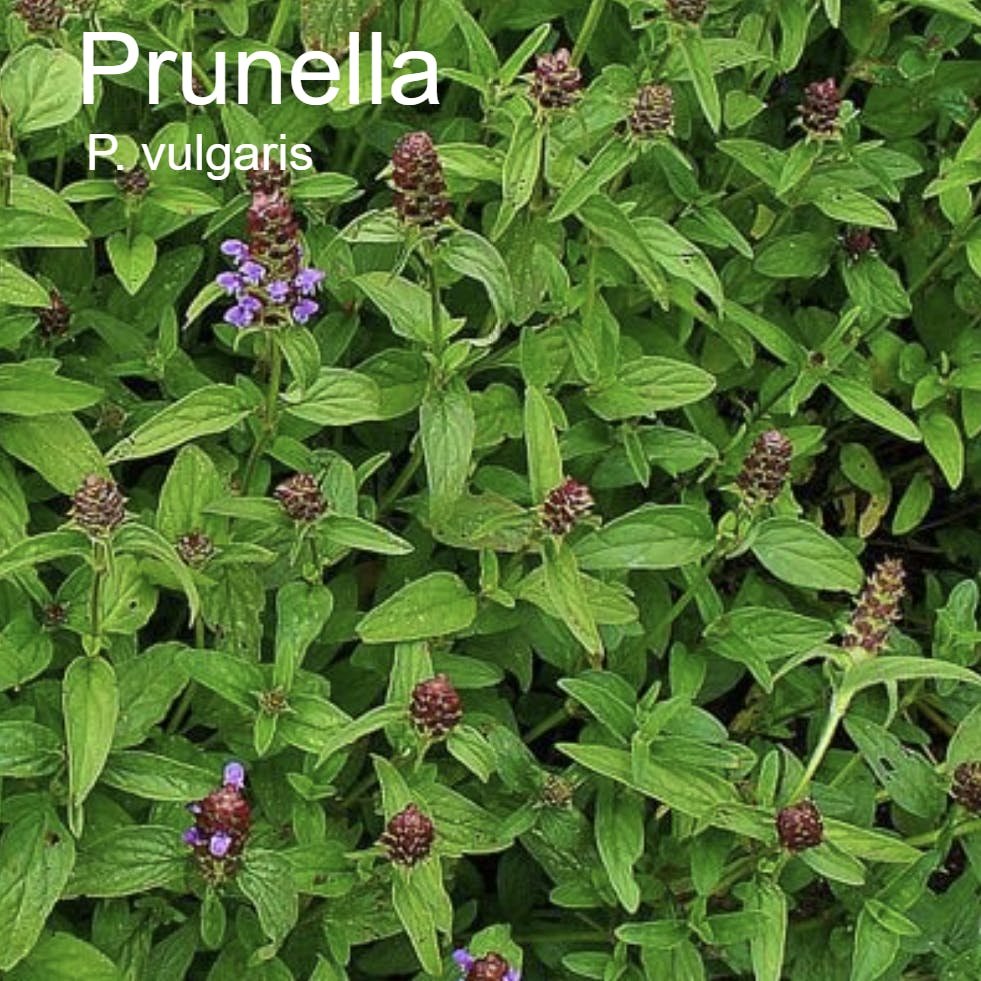
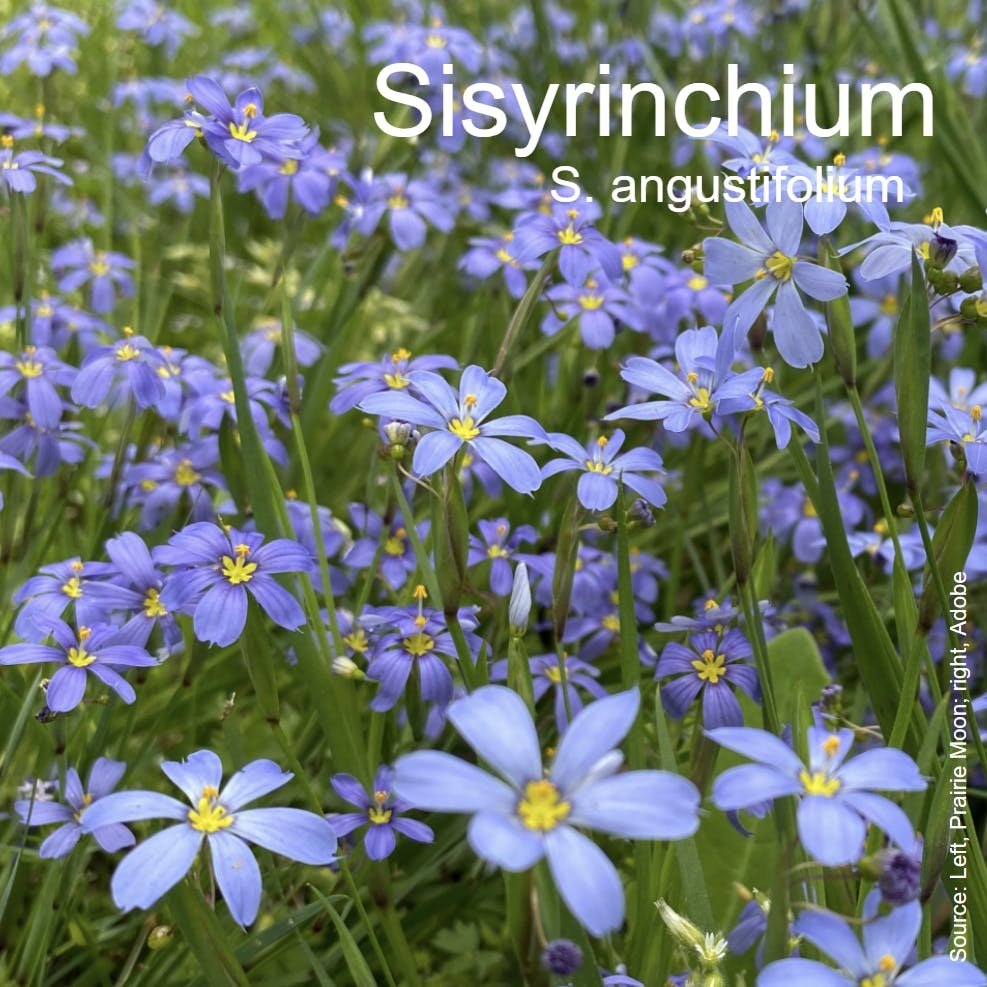
Channeling Oudolf
Starting about 40 years ago, Dutch plantsman Piet Oudolf started designing with perennials because he liked the way they changed over the course of the seasons. He scoured the world to find interesting plants that fit the naturalistic aesthetic he liked. And this aesthetic has taken off in a big way.
Oudolf was particularly interested in structural perennials with interesting seedheads or other features that look attractive even when they are dormant — what we call “plants that look good dead.” Although his interest was initially aesthetic, we now know how important leaving the stalks and seedheads are to bees that overwinter in them and birds that eat them, respectively.
Part of Oudolf’s genius is juxtaposing masses of different plant forms — airy, feathery, spiky, and so on. Note the different forms below and consider how you can juxtapose them in your garden, planting in masses appropriate to the size of your planting area. Make sure to repeat forms (or specific plants) throughout your yard.
I’ve selected Oudolf favorites scaled for home gardens – three feet tall or less. I included some taller plants with spiky inflorescences that don’t have a lot of mass high up; Oudolf treats these as plants you can see through them, for example putting them in the fronts of beds.
Daisy-like with unusual seedheads
For this shape, choose among the many species of Echinacea and Rudbeckia. See examples and how to find them in "Why, How, Wow!" below.
Round or unusual seedheads
Monarda bradburiana – Bradbury’s monarda – is only two feet tall and is an Oudolf favorite, as you can see in the image on the right from Lurie Gardens In fact, Oudolf loves the entire genus – as do we. He writes:
Without a doubt one of the most important of garden plant genera. Everything about the plants is attractive. The stems are sturdy and do not collapse. The leaves smell delightful, and the flowers are plentiful and last a long time. The inflorescence consists of budlike bundles of calyces, from which new lipped flowers keep on appearing from bottom to top…. As a finishing touch, swarms of butterflies descend on the plant when in flower.
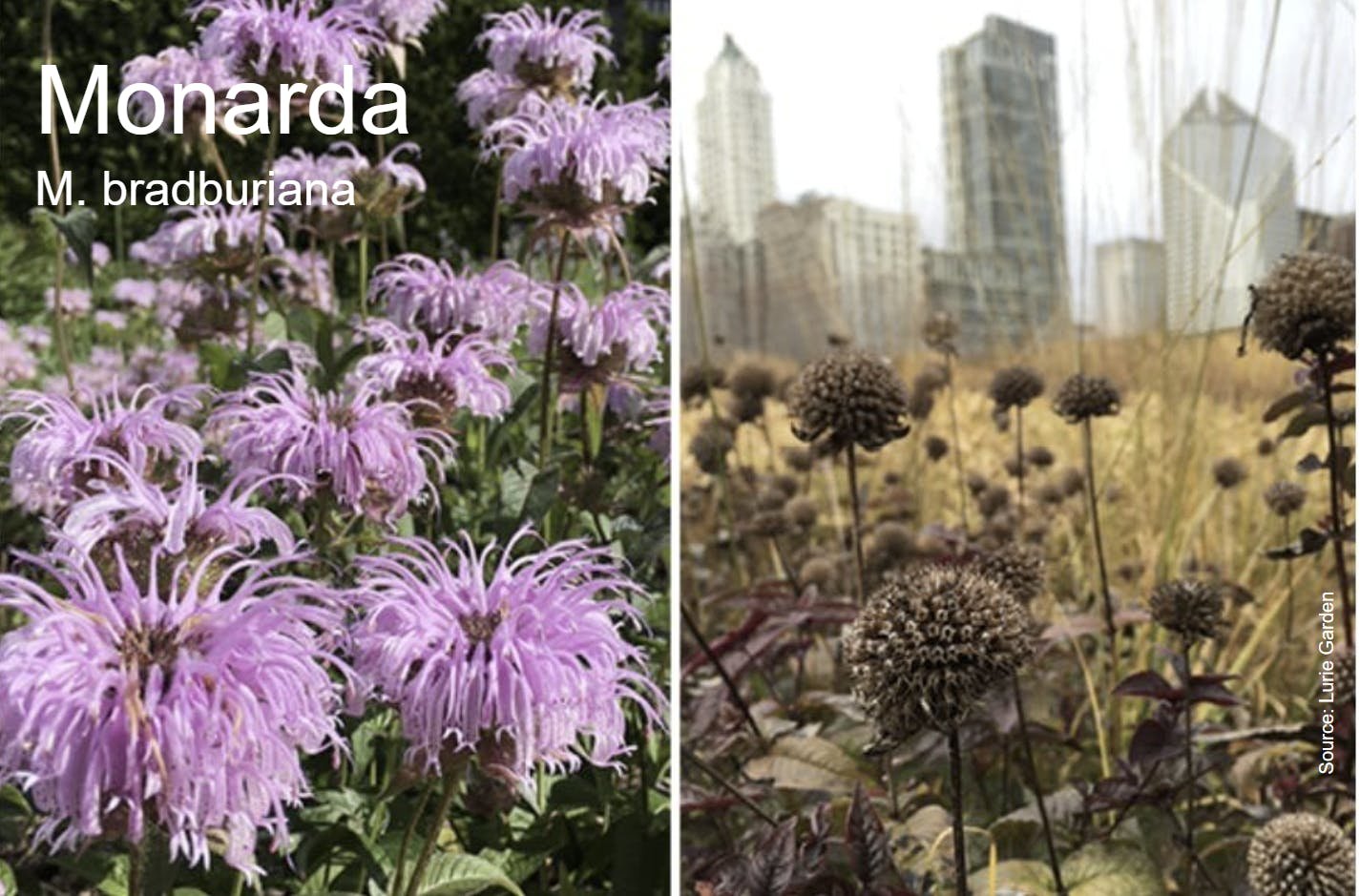
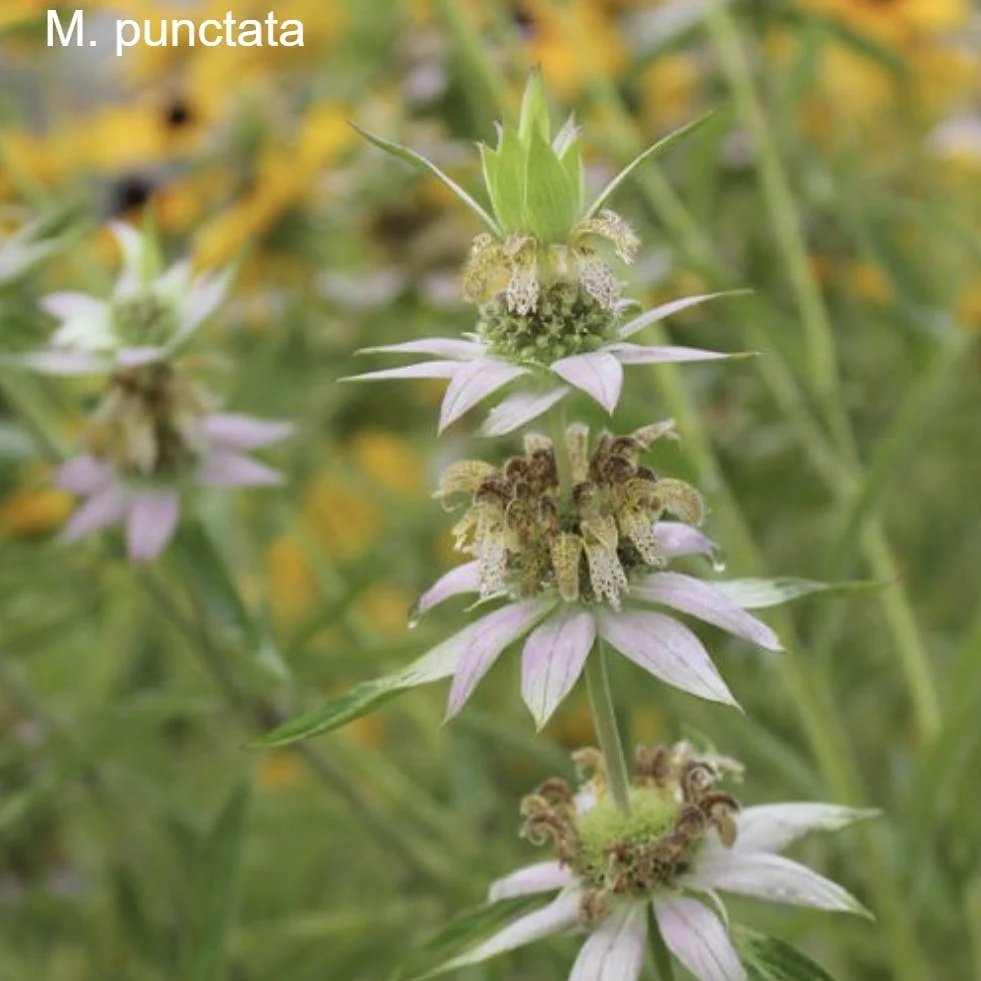
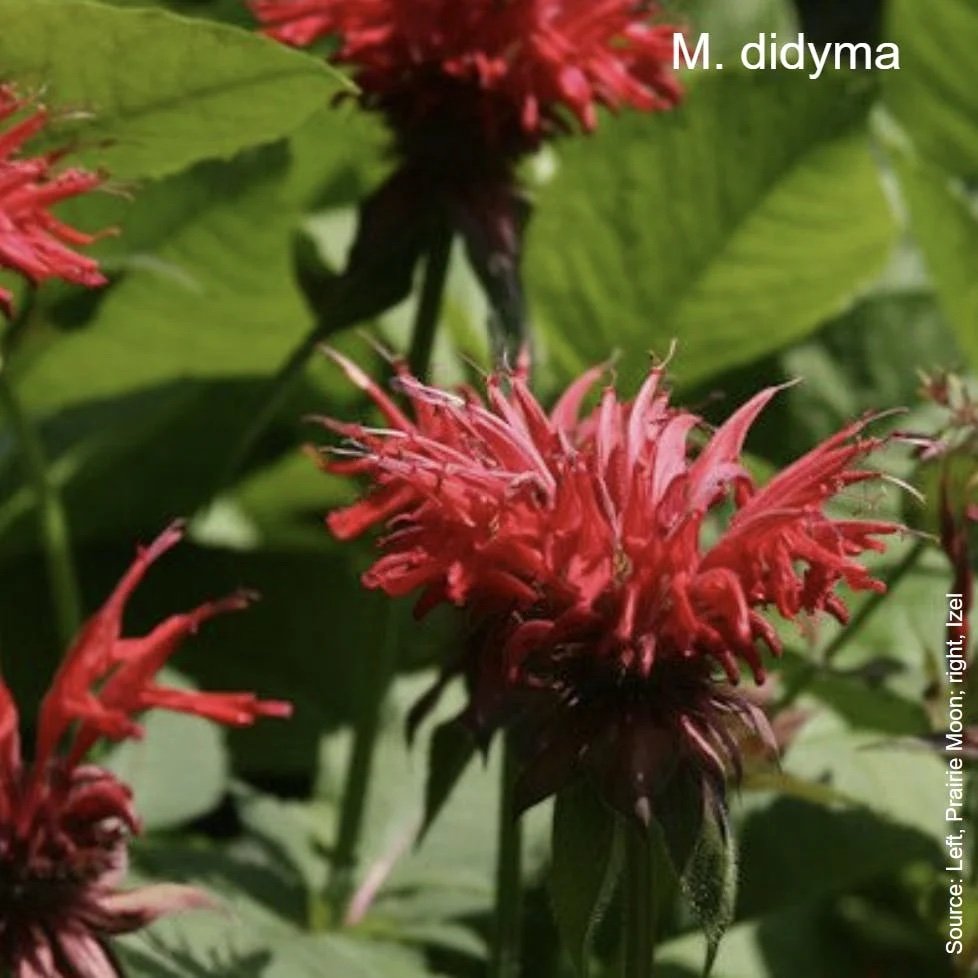
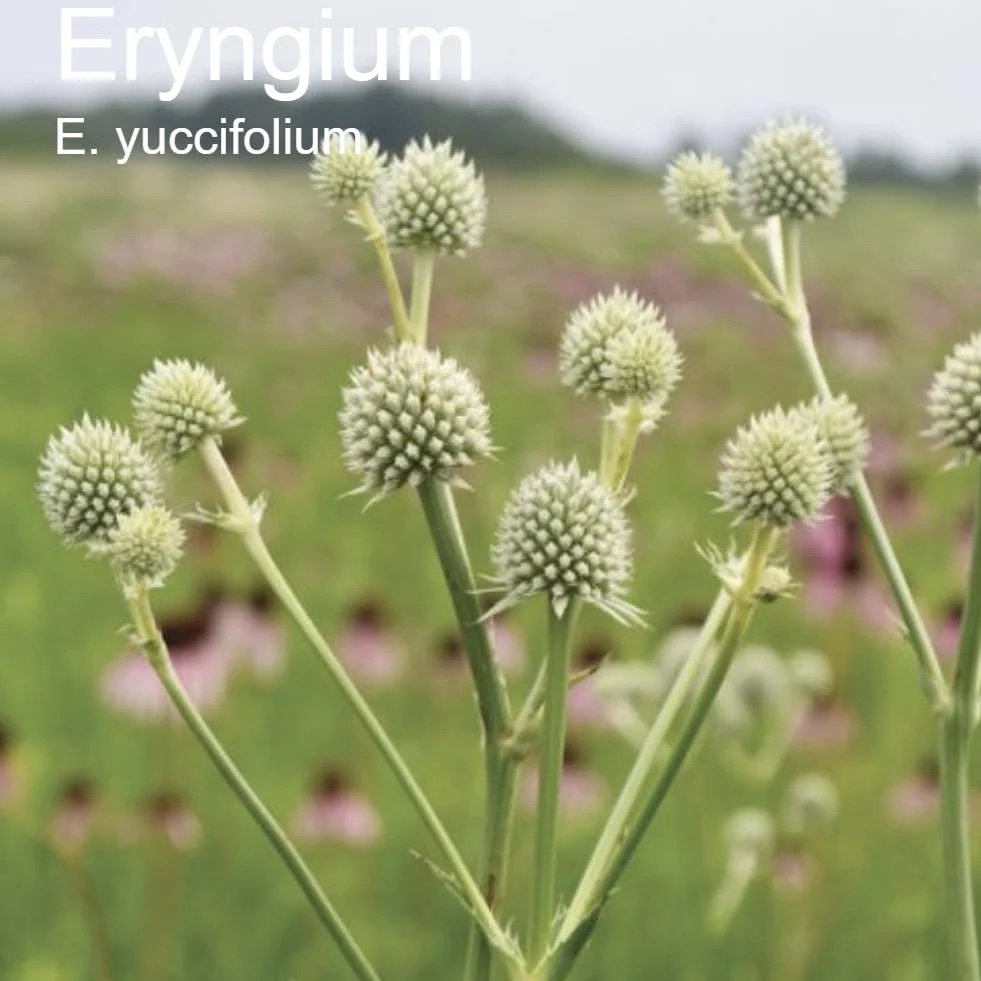
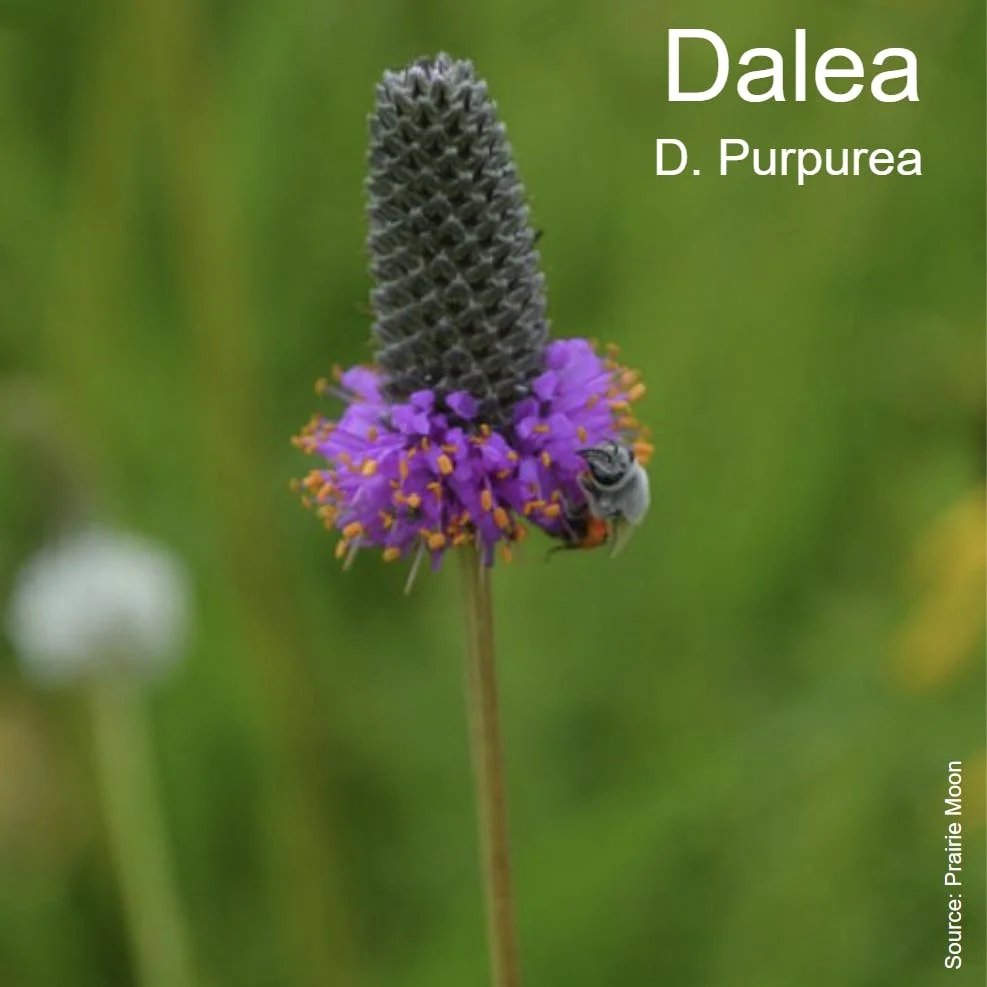
Umbels
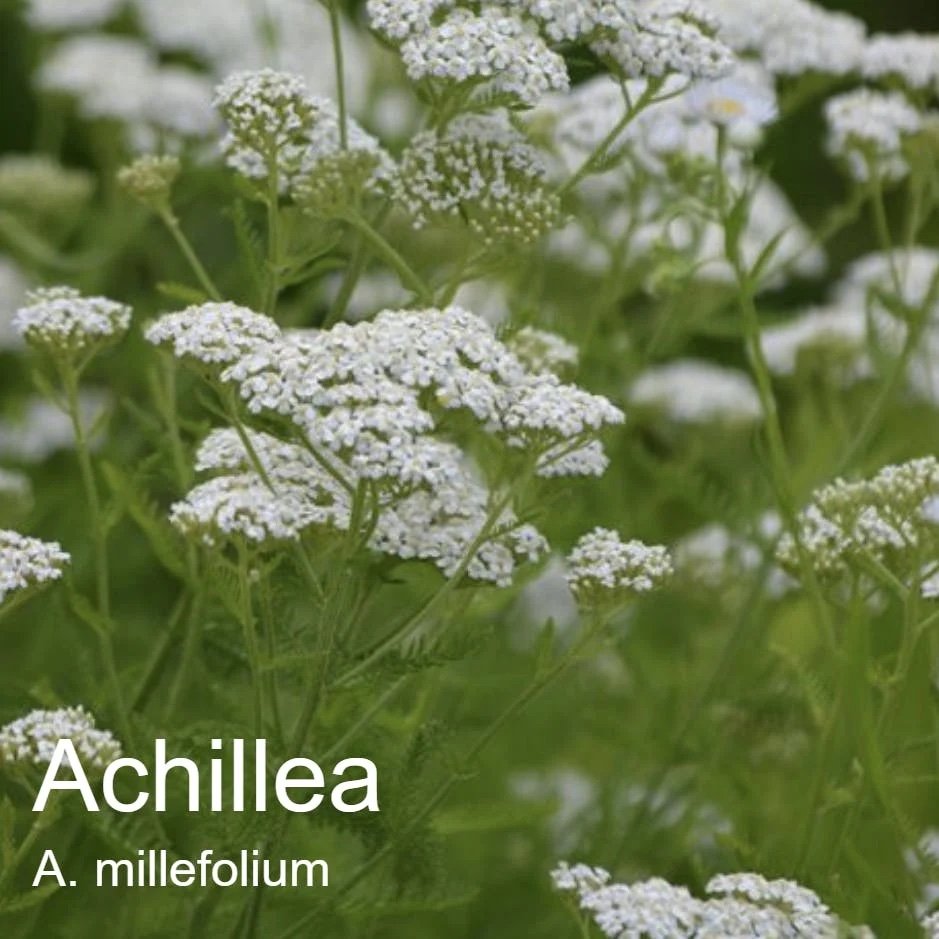

Clouds of tiny flowers
Feathery

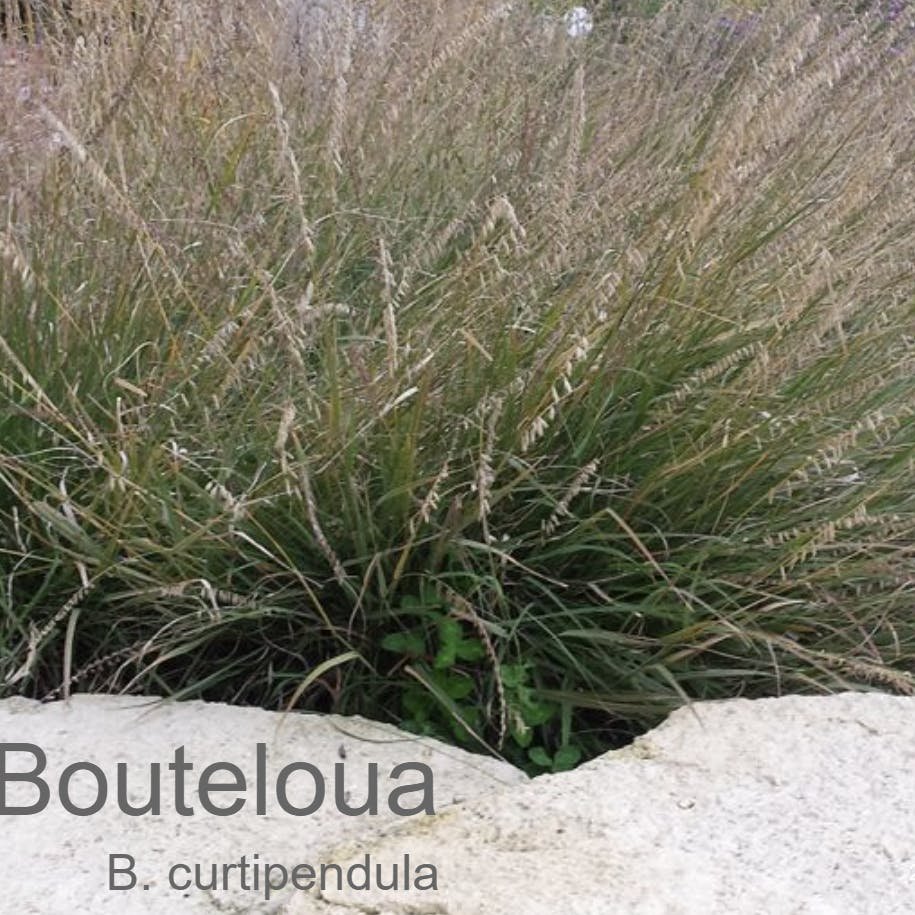
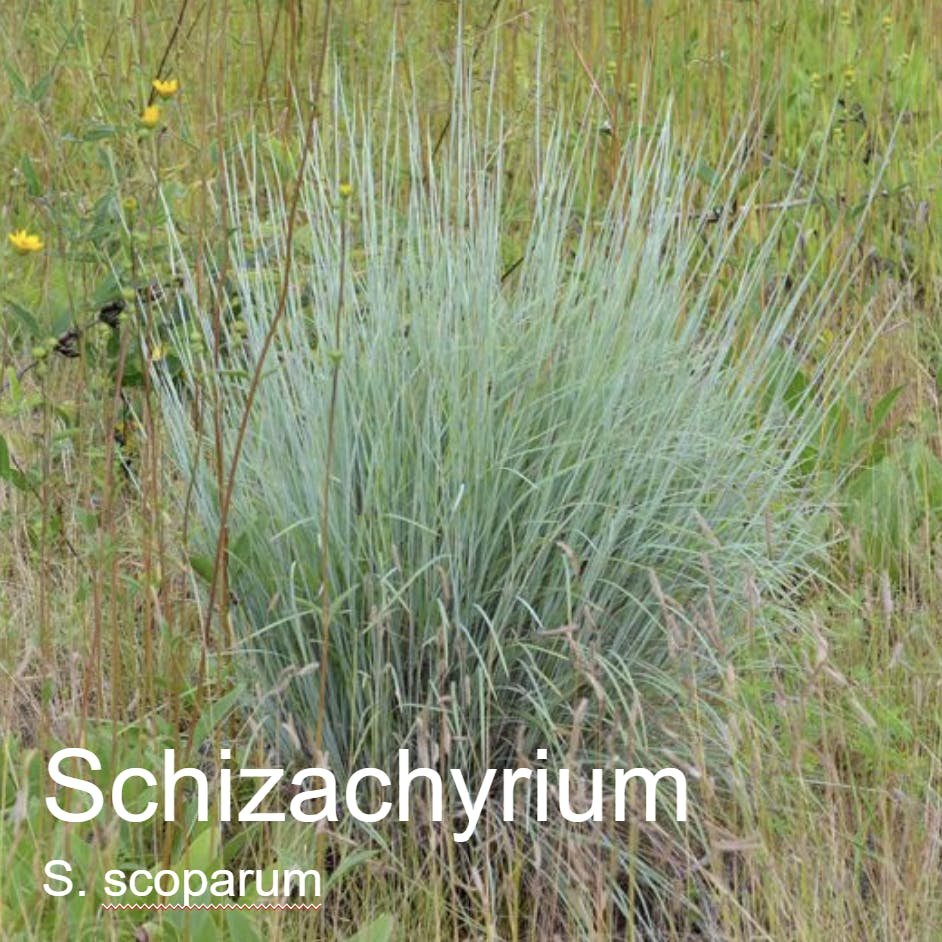
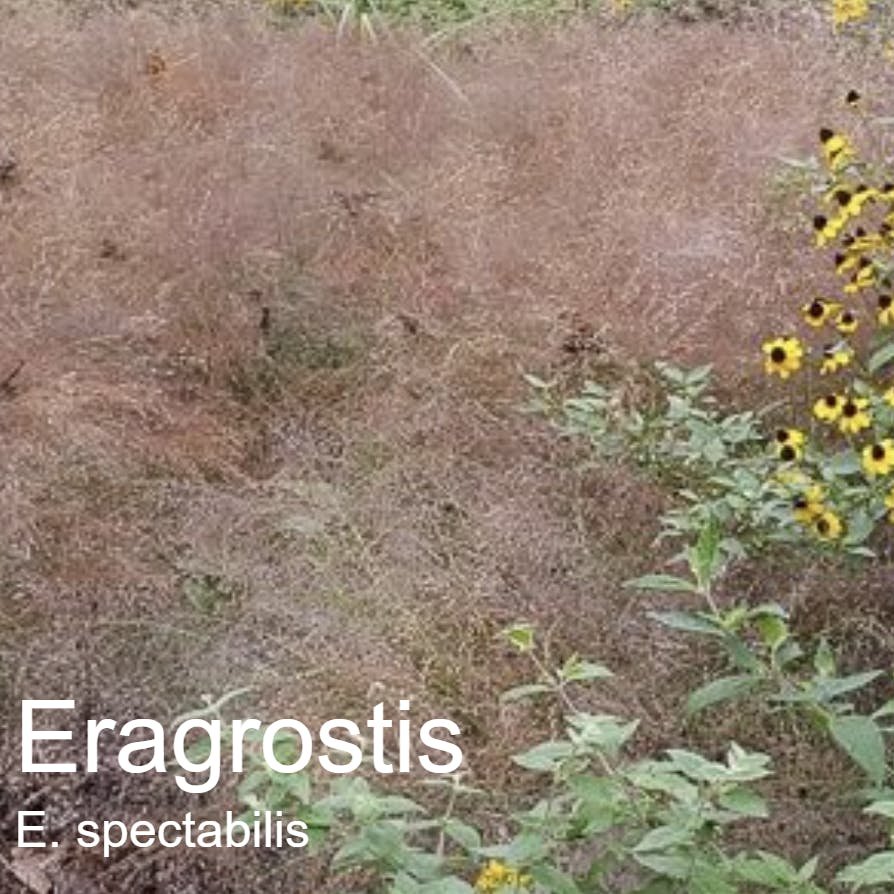

Spiky
Nitrogen fixers
To enrich your soil naturally, consider including some nitrogen fixers in your garden.
Nitrogen-fixing plants are those with rhizobia bacteria that live on their roots and convert the atmospheric nitrogen into nitrogen compounds for their own use. – Gardenia.net
Many nitrogen fixers are in the pea family and you can often recognize them by their compound leaves. Chamaecrista fasciculata, partridge pea, is an annual nitrogen-fixer included in many seed mixes because it blooms year one and also improves the soil. Note that popular sweet peas are invasive vines that plague many native plantings. I’ve spent many hours removing sweet peas from the native garden at Audubon, where I volunteer. Please don’t plant them.
By the way, white clover, a much-ballyhooed nitrogen fixer, is an exotic, though generally benign. There are also nitrogen-fixing native clovers, including Dalea purpea, pictured above. Ceanothus and Amorpha are also nitrogen-fixing genera.

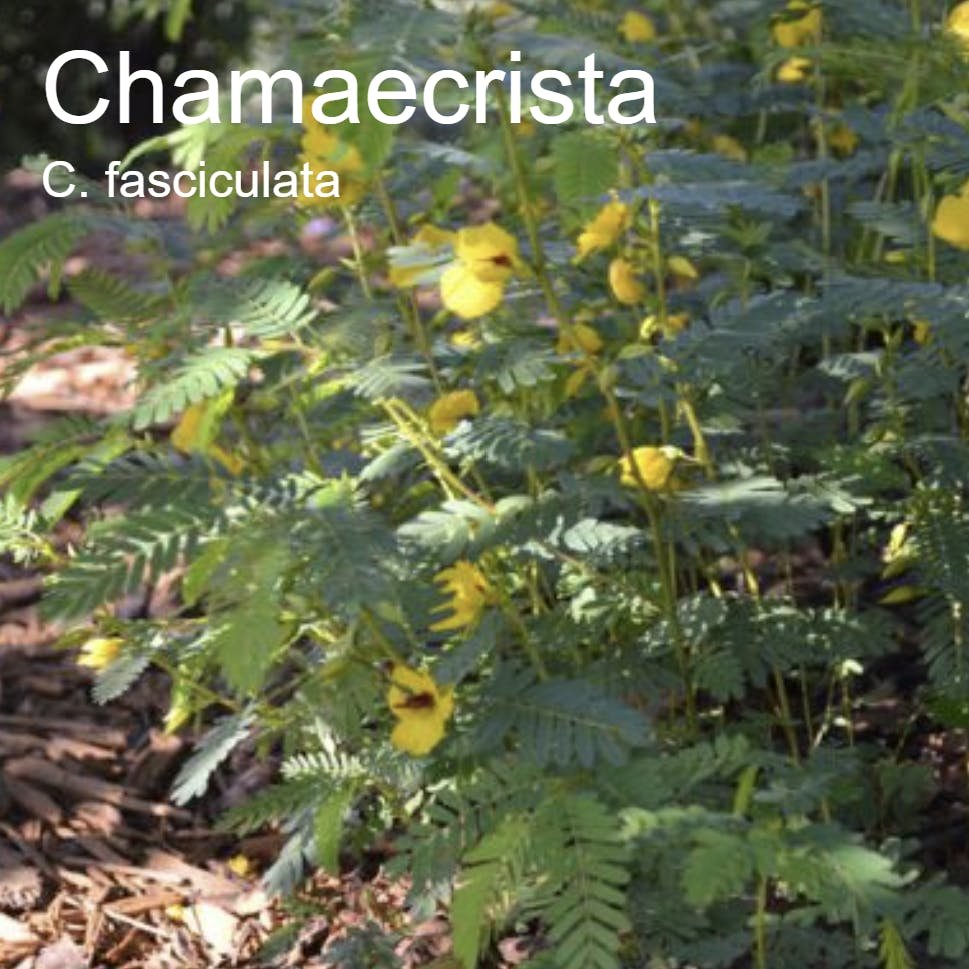
Why, How, Wow!
Why?
One of my goals, based on the work of Doug Tallamy, is to host as many caterpillars as possible in my yard. Caterpillars are vital food for nestlings, without which the vast majority of terrestrial bird species cannot reproduce. To find keystone plants — genera that host dozens of caterpillar species — I use the National Wildlife Federation's Native Plant Finder.
To make sure I included enough keystones in this list, I checked the NWF Native Plant Finder for a random East Coast zip code and scanned the list of non-woody genera for great garden plants. All but one is included above; only Helianthus — sunflower — was missing.
The huge sunflowers you’re familiar with are indeed native, usually hybrids of the native H. annum. But there are species that fit better into a home yard, like H. divaricatus, woodland sunflower, seen above in front of my Rhode Island home when we were installing shutters. If at four feet tall it's too big for your yard, then three-foot H. strumosus — pale leaved sunflower — might be the plant for you.
Also worth mentioning for those of you interested in edibles is H. tuberosus — known as sunchoke or Jerusalem artichoke; be aware that it grows up to ten feet tall, so you need room for it.
Great garden keystones
Solidago
Fragaria
Helianthus
Eupatorium
Viola
Lupinus
Geranium
Panicum
Baptisia
Rudbeckia
How
Piet Oudolf now creates public gardens using perennials from around the world, including many North American prairie plants. Unfortunately, these can be too tall for residential yards — and may have narrow native ranges. For example, Oudolf’s favorite Rudbeckia — R. maxima — one of the daisy-like flowers with unusual seedheads — is six feet tall. Oudolf loves to put this sort of tall, open plants in the foreground, treating them as see-through
Even if you have the space for R. maxima, it has a tiny range and is probably not native where you are. It’s an example of how Oudolf scoured the globe for plants, interested in how they look and behave in the garden, not whether they support local biodiversity. I don’t think there’s any harm in growing R. maxima out of its range if you have the right conditions, but it may not support insects that evolved in your area. However, there are Rudbeckias that work well in residential yards.
Oudolf favorite Rudbeckia maxima is six feet tall and has a very limited native range, seen in light green above right.
You can find species native to your location by using various databases, including the comprehensive one at wildflower.org or the smaller, more user-friendly one at prairiemoon.com. For example, I searched “All Plants” at Prairie Moon for Rudbeckias native to Tennessee that like full sun and grow two to three feet tall. As you can see below, there are two: R. fulgida and R. hirta. Note that Oudolf says these are “coarse” and the foliage is “uninspiring.” However, I grow both of them in Rhode Island and enjoy their profuse bright, sunny blooms.
Sample search on Prairie Moon website; the native range maps at right are from tabs within the individual species pages.
Wow!
Helianthus divaricatus in front of my Rhode Island home (during shutter installation)
Related Resources
Curious about how Piet Oudolf uses structural perennials? Read Plants that Look Great in Winter.
Looking for native plants for a woodland garden? Check out Vibrant Native Plants for Shade.
Want mega-keystones to support even more wildlife? Look at my list of 75 Fabulous Native Trees and Shrubs.





